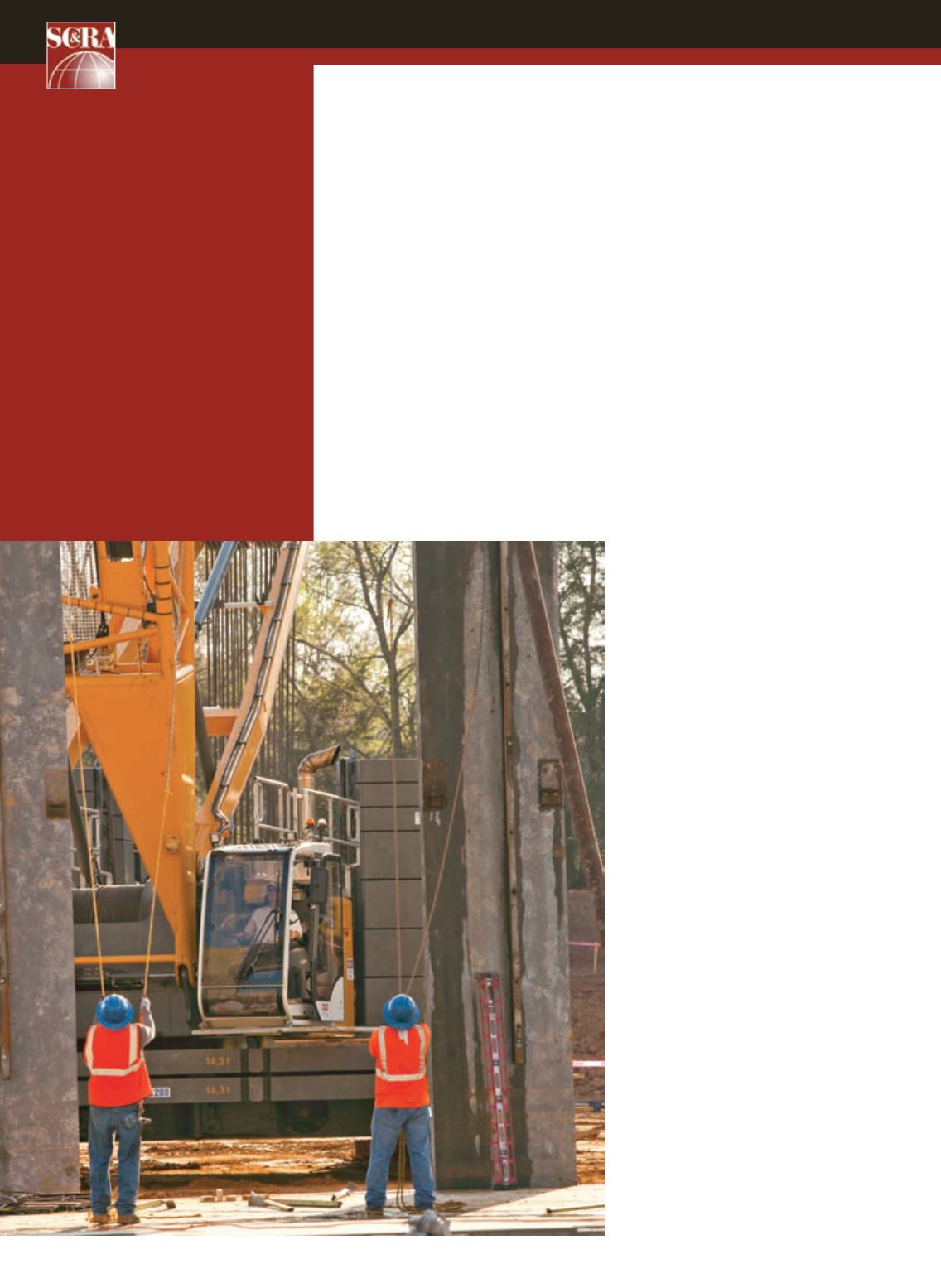
54
ACT
OCTOBER 2013
RISK MANAGEMENT
Citation
Michelle Lorenz
asks: Do
rigger and signalperson
qualifications correlate
with the cause of crane
and rigging accidents?
I
n the Risk Management article in
the May 2013 issue of
ACT
, John
Schoppert outlined the 10 most
common OSHA citations under the
new Crane and Derrick standard
1
. This
month, we will discuss some accidents
that correlate with two of those 10 OSHA
citations: lack of qualifications of riggers
and signalmen. According to OSHA,
in 63 percent of construction site crane
fatalities, the victims are ironworkers and
riggers. See
Crane Related Fatalities in the
Construction Industry, ASCE’s Journal of
Construction Engineering & Management
(September 2006). Quite often those
fatalities occurred when riggers were
stuck by the load or during assembly and
disassembly. Hence it’s easy to see why
OSHA has emphasized the importance of
having qualified riggers and signalmen.
The accident isn’t the crane company’s
fault but. . . At NBIS, we commonly see
crane and rigging accidents caused by
negligence of the riggers and/or signal
people – sometimes it’s due to lack of
qualifications and it correlates to OSHA
citations under
29 CFR section 1926
.
But, just as often it’s a result of lack of
planning, inattention, being in a rush,
laziness or a simple mistake. Ironically,
it is often the rigger or signalperson who
causes his own injury then tries to blame
the crane company for his own failure to
follow safety protocols. This is even more
dangerous when the plaintiff ’s employer
is both the site supervisor and lift director
as that leaves no one else to sue because
of worker’s compensation immunity.
Thus, the injured worker looks elsewhere
to find someone, anyone, else to blame.
Unwilling to point the smoking gun back
at themselves, the injured workers instead
point the finger at the crane and rigging
company involved in the lift.
Consider these hypotheticals:
■
MASTER RIGGER PERFORMS RIGGING AND
RIGGING FAILS.
The master rigger uses your
nylon straps to rig a load. He rigs the load
wrong; the straps slip; the softeners slide
off; the straps are cut on the sharp metal
edge of the load. After the first strap is
sliced, a shock load occurs. The load falls
and amputates the master rigger’s leg.
Immediately after the accident, the straps
have red threads. The master rigger sues
the crane company alleging fault rigging
equipment and lack of proper softeners.
■
ARBORIST FALLS OUT OF A TREE WHEN
A DECAYING LIMB BREAKS.
Your crane
operator is doing a blind lift flying out the cut
sections of a 100-year-old tree. The climber
up in the tree is standing on a decaying limb
that breaks. Not tied off to the limbs he was
cutting overhead, he falls to the ground and
is paralyzed. He sues the crane company
saying the operator didn’t smoothly control
the load and swung it into the tree limb,
causing it to break.
■
RIGGER INJURED BY LANDED LOAD HE
FAILED TO SECURE.
An ironworker is atop
a building landing steel joists. In a rush
Be sure to discuss the high incidence of
injuries to riggers and signalmen at one of
your future safety meetings.


